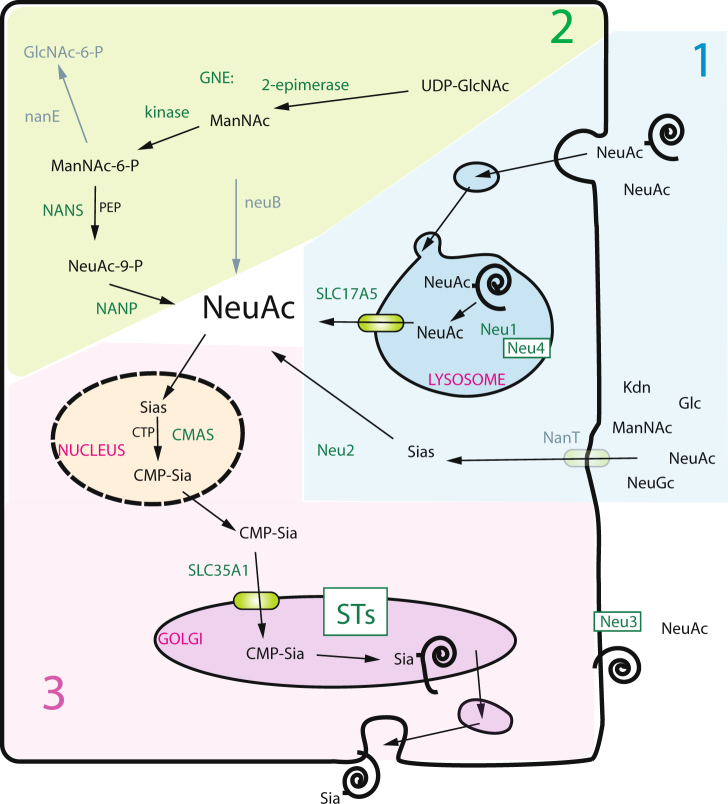Figure 1.
Schematic representation of the sialic acid metabolism pathway in eukaryotic cells. The key steps of the biosynthesis of sialic acid and its transfer and removal from sialoglycoconjugates is depicted (pink background). Cytosolic sialic acid molecules in eukaryotic cells, originate either from (1) exogenous sialyloglycoconjugates via the lysosome after Neu1 and SLC17A5 action or via an as yet unknown mechanism of uptake at the plasma membrane (blue background) or (2) from a cytosolic UDP-GlcNAc molecule biosynthesized in the hexosamine pathway (green background). Abbreviations used are indicated as follows: GNE: UDP-GlcNAc 2-epimerase/ManNAc kinase (the 2 enzymatic domains are fused in Deuterostoma); NANS: Neu5Ac-9-phosphate synthetase also known as N-acetylneuraminate lyase; NANP: Neu5Ac-9-phosphate phosphatase; CMAS: CMP-Sialic acid synthetase; STs: Golgi sialyltransferases; Neu1–4: sialidase 1–4; Sia: sialic acid; CMP: cytidine monophosphate; CTP: cytidine triphosphate; PEP: phosphoenolpyruvate; SLC17A5: sialin; SLC35A1: CMP-sialic acid transporter. Key steps in N-acetylneuraminate biosynthesis in Bacteria are indicated in grey characters.

